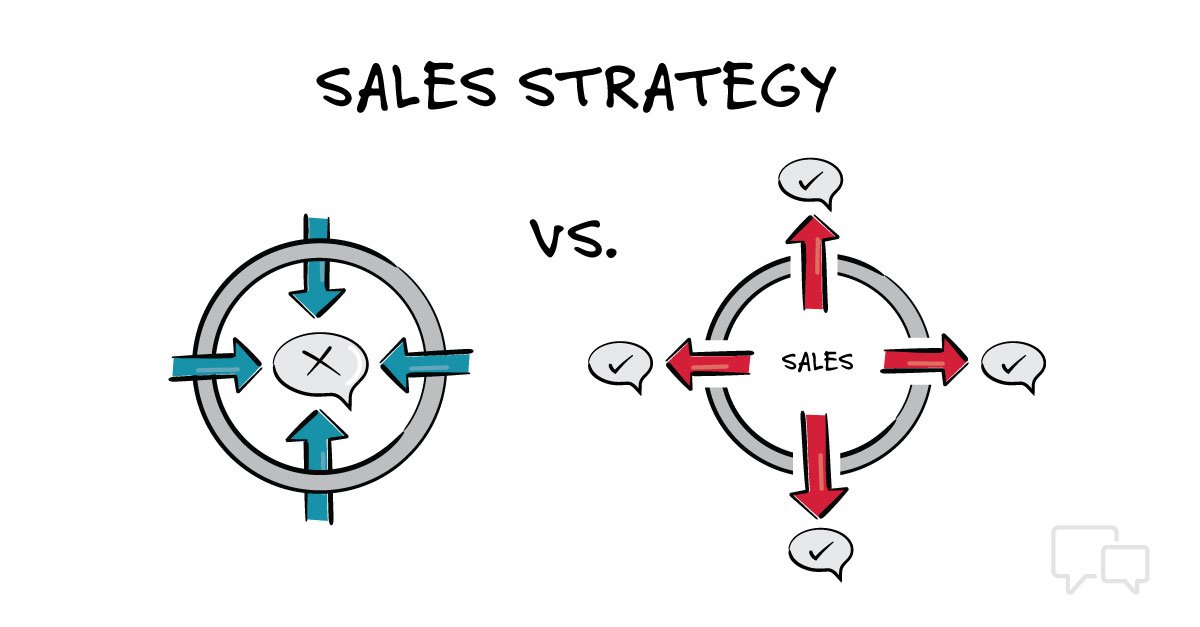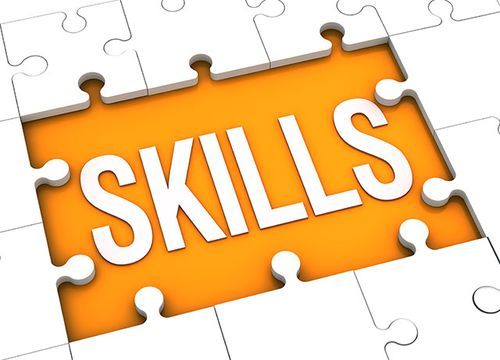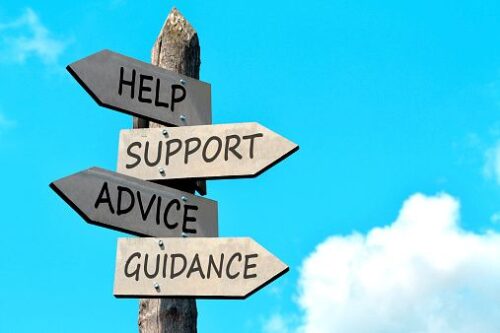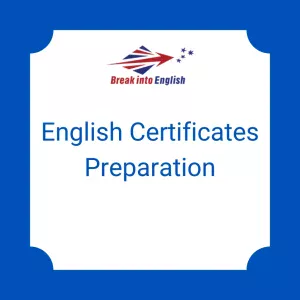English for sales is a specialized language that is essential for anyone working in the sales industry. Whether you’re a sales representative (sales rep), sales manager, account manager, customer success manager (CSM), sales engineer, director of sales, sales consultant or business development manager, understanding the terminology and jargon used in sales is vital to effectively communicate with clients and colleagues around the globe, and to negotiate deals. In this article, we will explore 50 common terms used in English in the sales industry, along with their definitions and examples. We have decided here to list them in order of frequency of use.
Here are 50 common sales terms used in English

- Lead: A potential customer who has shown interest in a product or service.
Example: “BMW has several leads from their recent auto show. These are individuals who have expressed interest in their high-end vehicles and have provided contact information to the BMW sales team.”
- Prospect: A lead that has been qualified and has a higher chance of becoming a customer.
Ex: “Unilever has identified prospects from their lead list that have a need for their personal care products and have the budget to purchase them. The sales team is now targeting these prospects for their next sales pitch.”
- Pipeline: The series of stages that a lead goes through before becoming a client.
Ex: “ExxonMobil has a sales pipeline that includes lead generation through conferences and events, lead nurturing through technical discussions and product demonstrations, and closing deals through negotiations and contracts.”
- Qualification: The process of determining whether a lead or prospect is a good fit for a product or service.
Ex: “Coca Cola has a qualification process that includes assessing the prospect’s target market, distribution channels, and marketing strategy to determine if they are a good fit for their beverage product line.”
- Sales cycle: The time it takes to complete a sale from initial contact to closing the deal.
Ex: “Google’s sales cycle for their cloud computing services can take up to 6 months, as they are selling to large enterprises with complex IT requirements and decision-making processes.”
- Closing: The final step of the sales process, where the sale is completed.
Ex: “Facebook’s sales team is working on closing a deal with a large e-commerce company for their advertising platform by the end of the quarter.”
- Objection: A concern or challenge raised by a prospect that needs to be addressed before the sale can be completed.
Ex: “An online education provider faced objections from a prospect regarding the quality of their courses. The sales team presented testimonials from satisfied customers and the success rates of their graduates to address these concerns.”
- Value proposition: The unique benefit or advantage that a product or service offers to the customer.
Ex: “Tesla’s value proposition is that their electric vehicles offer superior performance and environmental sustainability compared to traditional gasoline-powered cars.”
- Features: The distinct characteristics or attributes of a product or service.
Ex: “Boeing has added several new features to their commercial aircraft, such as larger windows and more legroom, to enhance the flying experience for passengers.”
- Benefits: The advantages or outcomes that a customer will experience as a result of using a product or service.
Ex: “Amazon Prime’s key benefit is that it offers free and fast shipping, access to exclusive content, and discounts on select products to its members.”
- ROI: Return on investment, a measure of the financial gain or loss from an investment.
Ex: “Goldman Sachs showed a client the potential ROI of investing in a particular hedge fund, based on their analysis of market trends and performance.”
- Upsell: The act of persuading a customer to purchase additional products or services.
Ex: “Microsoft was able to upsell a customer on their premium software suite with additional features, after demonstrating the software’s capabilities and the potential cost savings over time.”
- Cross-sell: The act of offering complementary products or services to a customer.
Ex: “Home Depot suggested some cross-selling options to a customer who had just purchased a kitchen appliance, such as matching cookware and utensils.”
- Closing ratio: The percentage of leads that result in closed deals.
Ex: “A real estate brokerage’s closing ratio has increased by 20% since they started targeting leads that were actively searching for properties in specific neighborhoods.”
- Commission: A percentage of the sale that is paid to the salesperson as a reward for making the sale.
Ex: “A-1 luxury car dealership in Paris offers their sales reps fat commissions for each deal they close.”
- Quota: The specific sales target set for a salesperson to meet within a given period of time, such as a month or quarter.
Ex: “John has a monthly quota of $50,000 in sales on management software for the aviation industry that he must close to meet his performance goals.”
- Territory: The specific geographical area or market that a salesperson is responsible for targeting and selling to.
Ex: “Sara’s territory covers the northeast region of the United States, where she focuses on selling our company’s new software to mid-sized businesses. In the retail industry, a territory could be a specific neighborhood or zip code where a salesperson is tasked with increasing sales for a particular store or product line.”
- Sales funnel: A visual representation of the different stages a potential customer goes through in the sales process, from initial awareness to final purchase.
Ex: “Our sales funnel shows that we have a lot of leads in the awareness stage, but we need to focus on improving our conversion rate to move them further down the funnel. In the software industry, a sales funnel could show how many free trial users convert into paid subscribers at each stage of the funnel.”
- Cold calling: The practice of reaching out to potential customers who have not expressed prior interest in the product or service being offered.
Ex: “Every morning, our sales team spends an hour making cold calls to new leads to introduce them to our latest line of fitness equipment. In the insurance industry, cold calling might involve calling potential customers who recently purchased a new car or home to offer them insurance coverage.”
- Referral: A lead or prospect who was recommended by an existing customer, increasing the likelihood of conversion and building trust.

Ex: “After receiving a referral from a satisfied customer, our sales team reached out to the prospect and closed a deal for a large contract. In the financial services industry, referrals could come from existing clients who recommend their financial advisor to friends or family members.”
- Networking: The practice of building and nurturing relationships with potential customers and other industry professionals to generate leads and build credibility.
Ex: “As a real estate agent, Maria regularly attends local business events to network with potential clients and build relationships with other professionals in the industry. In the technology industry, networking could involve attending conferences and trade shows to meet potential customers and build partnerships with other companies.”
- Follow-up: The act of reaching out to a lead or prospect after initial contact to keep the conversation going and move them further down the sales funnel.
Ex: “After sending a proposal to a potential client, our sales team followed up with a phone call to answer any questions and address any concerns they had. In the hospitality industry, follow-up could involve reaching out to a guest after their stay to thank them for their business and encourage them to leave a positive review.”
- Pitch: A persuasive presentation of a product or service to a potential customer, highlighting its key features and benefits.
Ex: “During a sales presentation, our team gave a strong pitch on the advantages of our new software, emphasizing its ease of use and time-saving capabilities. In the fashion industry, a pitch could involve showcasing the latest collection to potential buyers and highlighting the unique design elements and materials used.”
- Objection handling: The skill of effectively addressing and overcoming objections raised by a prospect during the sales process.
Ex: “When a prospect raised concerns about the price of our product, our sales team responded by highlighting its long-term cost savings and value proposition. In the automotive industry, objection handling could involve addressing concerns about the safety or reliability of a vehicle by providing data and statistics on crash tests and customer satisfaction.”
- Customer relationship management: The process of building and maintaining positive relationships with customers to retain their business and increase customer loyalty.
Ex: “Our customer relationship management team regularly checks in with existing customers to ensure their satisfaction and address any concerns or issues they may have. In the telecommunications industry, customer relationship management could involve providing personalized offers and discounts to long-term customers to encourage them to stay with the company.”
- Sales collateral: Marketing materials and resources used to support the sales process, such as brochures, case studies, and presentations.
Ex: “Our sales team at Cisco uses a variety of sales collateral, including customer success stories and product demo videos, to help educate and persuade potential customers.”
- Sales pitch: A concise and compelling presentation of a product or service to a potential customer, typically delivered in a short amount of time.
Ex: “In just a few minutes, our sales pitch highlights the key benefits and competitive advantages of our latest top of the line screen, making it easy for prospects to understand and remember its key feature.”
- Sales territory mapping: The process of identifying and assigning sales territories to salespeople based on factors such as geography, market potential, and customer demographics.
Ex: “Our sales territory mapping process helped us allocate our resources more effectively, resulting in increased sales and better coverage of our target markets all across North America and Asia.”
- Target audience: The specific group of individuals or businesses who are most likely to be interested in and benefit from a specific product or service.
Ex: “The target audience for this new graphics card from Nvidia is either high-end 3D designers or professional gamers who can afford to dish out over 5000$ for this model.”
- Sales forecast: A prediction of future sales based on current trends and data.
Ex: “Amazon’s sales forecast for their Prime Day event indicates that they expect to generate over $11 billion in sales this year, surpassing their record-breaking sales from the previous year.”
- Customer acquisition cost: The cost of acquiring a new customer, including marketing and sales expenses.
Ex: “Uber reported a $6.5 billion loss in their IPO filing, largely due to their high customer acquisition costs, which include incentives for new riders and drivers.”
- Sales enablement: The tools and resources provided to salespeople to help them sell more effectively.
Ex: “Salesforce provides a comprehensive sales enablement platform that includes training, coaching, and analytics to help their sales team close more deals.”
- Sales process optimization: The process of analyzing and improving the sales process to increase efficiency and effectiveness.
Ex: “HubSpot’s sales process optimization efforts helped them increase their sales productivity by 40% and reduce their sales cycle time by 33%.”
- Sales performance metrics: Key performance indicators (KPIs) used to measure the effectiveness of the sales team, such as revenue and conversion rates.
Ex: “Apple’s sales performance metrics include customer satisfaction ratings and average revenue per user, which have helped them maintain their position as a market leader in the technology industry.”
Interested in improving your English?
Sign up for a 30-minute trial lesson
Interested in improving your English? Sign up for a 30-minute trial lesson

- Sales strategy: A plan for achieving sales goals, including tactics and techniques for reaching target customers and closing deals.
Ex: “Nike’s sales strategy includes a focus on innovation, customer engagement, and partnerships with key retailers, which has helped them maintain their position as a leading athletic apparel brand.”
- Sales automation: The use of technology to automate and streamline the sales process, such as email marketing and lead nurturing software.
Ex: “IBM’s sales automation efforts have helped them improve their lead conversion rates by 300% and reduce their sales cycle time by 50%.”
- Sales forecasting tools: Software and tools used to predict future sales based on historical data and trends.
Ex: “Walmart uses advanced sales forecasting tools to analyze customer data and predict future demand for their products, which has helped them optimize their inventory and reduce waste.”
- Sales prospecting: The process of identifying and qualifying potential customers who are likely to be interested in a product or service.
Ex: “LinkedIn’s sales prospecting features, such as Sales Navigator and InMail, have helped them become a valuable tool for B2B sales professionals looking to identify and connect with decision-makers.”
- Sales training: The process of educating and training salespeople on the product, sales techniques, and the sales process.
Ex: “Cisco’s comprehensive sales training program includes a focus on developing sales skills and product knowledge, which has helped them become a leading provider of networking and communication solutions.”
- Sales performance review: A regular evaluation of a salesperson’s performance, including sales metrics, feedback, and goal setting.
Ex: “General Electric conducts regular sales performance reviews for their sales team, which includes setting clear goals, providing feedback, and offering training and development opportunities to help them achieve their targets.”
- Sales operations: The administrative and operational functions that support the sales team, such as order processing and customer service.
Ex: “Ikea’s sales operations team ensures that the customer experience is seamless, from the moment they make an inquiry to the point of purchase. This has helped them build a reputation for delivering high-quality products and services.”
- Sales forecasting tools: Software and tools used to predict future sales based on historical data and trends.
Ex: “Intel’s sales forecasting tools have helped them stay ahead of the competition by anticipating market demand for new products. This has allowed them to adjust their production schedules accordingly and maximize revenue.”
- Upselling: The practice of encouraging a customer to purchase additional or higher-value products or services.
Ex: “Dell’s sales team focuses on upselling by offering customers the latest and most advanced technology. By doing so, they have managed to increase customer loyalty and drive repeat business.”
- Sales pipeline: The process of tracking and managing potential sales leads from initial contact to closing the deal.
Ex: “Airbus uses a sales pipeline to manage their complex sales process for aircraft. This ensures that they are following up with potential customers at the right time and delivering personalized solutions.”
- Sales cycle: The length of time it takes to complete a sale, from initial contact to closing the deal.
Ex: “Toyota is working to reduce their sales cycle time by using digital tools that streamline the sales process. This has helped them increase efficiency and improve customer satisfaction.”
- Sales target: A specific sales goal or objective that a salesperson or team is working to achieve.
Ex: “LinkedIn sets sales targets for their sales teams based on revenue, number of new accounts, and client retention. This keeps the team motivated and focused on achieving their goals.”
- Sales commission: A payment or incentive given to a salesperson for achieving a sales goal or closing a deal.
Ex: “At Pfizer, sales commission is tied to meeting specific sales targets. This motivates their sales team to go above and beyond in order to achieve their goals and earn a higher commission.”
- Cross-selling: The practice of offering additional or complementary products or services to a customer who has already made a purchase.
Ex: “IBM’s cross-selling strategy involves offering complementary products and accessories that enhance the functionality and aesthetic of the original purchase. This has helped them increase their average order value and build customer loyalty.”
- Sales lead: A potential customer who has expressed interest in a product or service and has provided contact information for follow-up.
Ex: “Apple’s sales team follows up with every sales lead to understand their specific needs and provide personalized solutions. This has helped them convert more leads into sales and increase revenue.”
- Sales follow-up: The process of contacting a potential customer after an initial sales contact to provide more information or to close the deal.
Ex: “Amazon places a high priority on sales follow-up to ensure that potential customers have all the information they need to make an informed decision. This has helped them build long-term relationships with their customers and drive repeat business.”
Conclusion
We’ll conclude this topic by saying that sales is the lifeblood of any business, and it is essential to understand the vocabulary and concepts related to it. The world of sales is constantly evolving, and it is crucial to stay updated with the latest trends and techniques.
Whether you’re selling a product, a service, or an idea, understanding the vocabulary of sales can help you communicate more effectively with your customers and colleagues. It can also help you develop a better understanding of your own sales process and identify areas for improvement.
So we encourage you to continue learning and exploring the world of sales. Embrace new technologies, experiment with new techniques, and always strive to provide the best possible experience for your customers. Remember, sales is not just about closing deals; it’s about building long-lasting relationships with your customers and creating a sustainable business for the future.
And by the by, if you’re interested in having a highly-qualified native English coach to train and guide you towards English for sales proficiency, look no further, Break Into English has you covered!
Finally, here are 15 quiz questions to test your knowledge of sales and marketing vocabulary:
- Which term refers to the process of tracking and managing potential sales leads from initial contact to closing the deal?
a) Sales pipeline
b) Sales cycle
c) Sales target
d) Sales follow-up
- What is the practice of encouraging a customer to purchase additional or higher-value products or services called?
a) Sales operations
b) Upselling
c) Sales forecasting
d) Cross-selling
- Which term refers to the length of time it takes to complete a sale, from initial contact to closing the deal?
a) Sales cycle
b) Sales lead
c) Sales commission
d) Cross-selling
- What is the specific sales goal or objective that a salesperson or team is working to achieve called?
a) Sales pipeline
b) Sales target
c) Sales follow-up
d) Upselling
- Which term refers to the payment or incentive given to a salesperson for achieving a sales goal or closing a deal?
a) Sales cycle
b) Sales commission
c) Sales forecasting
d) Sales target
- What is the administrative and operational functions that support the sales team, such as order processing and customer service, called?
a) Sales target
b) Sales operations
c) Sales lead
d) Sales forecasting
- Which term refers to software and tools used to predict future sales based on historical data and trends?
a) Sales commission
b) Sales cycle
c) Sales forecasting tools
d) Cross-selling
- What is the practice of offering additional or complementary products or services to a customer who has already made a purchase called?
a) Upselling
b) Cross-selling
c) Sales operations
d) Sales forecasting
- Which term refers to a potential customer who has expressed interest in a product or service and has provided contact information for follow-up?
a) Sales lead
b) Sales target
c) Sales pipeline
d) Sales cycle
- What is the process of contacting a potential customer after an initial sales contact to provide more information or to close the deal called?
a) Cross-selling
b) Sales forecasting
c) Upselling
d) Sales follow-up
- Which term refers to a specific salesperson’s or team’s territory or geographic area?
a) Sales pipeline
b) Sales region
c) Sales forecasting tools
d) Sales target
- What is the process of segmenting customers based on shared characteristics or behaviors called?
a) Sales lead
b) Sales forecasting
c) Sales operations
d) Customer segmentation
- Which term refers to the value of all goods and services sold by a company in a given period?
a) Sales revenue
b) Sales target
c) Sales commission
d) Sales cycle
- What is the practice of developing and maintaining relationships with customers to improve satisfaction and retention called?
a) Sales operations
b) Sales forecasting
c) Customer relationship management (CRM)
d) Sales lead
- Which term refers to a marketing strategy that focuses on selling to existing customers rather than acquiring new ones?
a) Customer retention
b) Customer acquisition
c) Sales forecasting
d) Sales operations
ANSWERS
1.a / 2.b / 3.a / 4.b / 5.b / 6.b / 7.c / 8.b / 9.a / 10.d / 11.b / 12.d / 13.a / 14.c / 15.a








